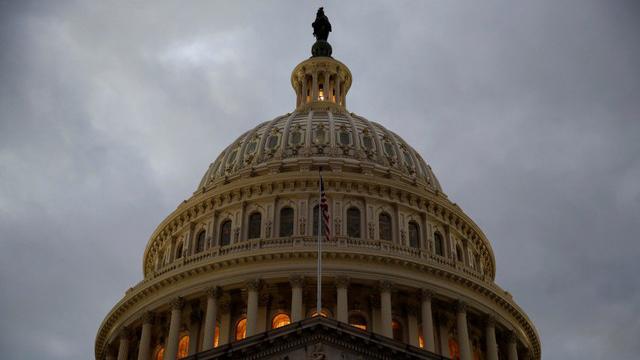Medicare-for-all bill: Why you should be very concerned
The unveiling of the ballyhooed House Democrats’ Medicare for All Act of 2019 bill will be met with chants of “equal health care for all!” While the country will be forced into a government-run program, the limousine liberals and champagne socialists will keep their array of medical care choices — whether on or off the record.
A key feature of the Medicare-for-All bill is the elimination of private health insurance that duplicates benefits offered by the government. Given the coercive nature of the existing Medicare program, we should be very concerned.
Medicare Part A (hospital insurance) is mandatory for those eligible for Medicare who receive Social Security payments. If beneficiaries want to opt out of Part A, they must forfeit all of their Social Security payments — including paying back any Social Security benefits received up to the time Part A was declined. So a “beneficiary” is punished for saving federal dollars by declining to be on the government health care dole.
Enrollment in Medicare Part B (all physician and most outpatient services) is not mandatory, but beneficiaries are financially coerced to enroll. The standard 2019 Part B premium amount is $135.50 per month, progressing to $460.50 based on income. But if a beneficiary doesn’t sign up for Part B when first eligible, he must pay a lifelong penalty of 10 percent for each full 12-month period that he could have had Part B. So if the beneficiary waited three years before signing up, he would pay a 30 percent higher premium throughout his lifetime.
Medicare Part D (prescription drugs) also imposes penalties on those who do not sign up when eligible unless they are in a Medicare Part C/Medicare Advantage HMO that covers drugs. The lifetime penalty is not trivial: one percent per month of the average monthly premium (currently about $33) for all the months they were not signed up.
Will we be somehow punished if we do not want to enroll in the new government program? Will there be an “individual mandate” penalty? Hopefully we’ll know and we can find out what’s in the bill before it is passed.
Another troubling aspect of a new government health program is the lack of an articulated budget or cost controls. According to the Medicare Board of Trustees 2018 Report, Medicare’s Part A trust fund will be depleted in 2026, three years earlier than the 2017 projection. Our 2017 health care costs were $3.5 trillion with $1.2 trillion attributed to Medicare, Medicaid, and the Children’s Health Insurance Program (CHIP). (Apparently, financing would depend on monies earmarked for existing federal health programs, heavily taxing “the rich” and an unspecified increase in everyone’s taxes.)
In addition to notoriously underestimated cost projections, Medicare underpayments to hospitals must be addressed. Hospitals receive 88 cents on the dollar from Medicare and 90 cents on the dollar from Medicaid for their expenditures on these patients, translating to reimbursements of $41.6 billion and $16.2 billion, respectively, below actual costs. Currently, hospitals make up the shortfall with higher payments from private insurance — which will no longer exist. Slashing oft-maligned CEO salaries would be a drop in the bucket. Hospital workers — unionized or otherwise -- would not accept pay cuts.
So how will the inevitable funding shortfall be addressed? Private practitioners may be enticed by the promise of a steady stream of patients and income or strong-armed into submitting to lower reimbursement or by new licensing requirements. Of course, many of us remember being paid with IOUs from the California Medicaid program.
The promise of completely “free” medical care of every sort imaginable gives one pause. What happens when the money runs out? Because Medicare defines what care is reimbursable as “medically necessary,” the simple answer is to decrease covered services. But by then, the private health insurance industry would be decimated and our options limited.
Proponents of government-sponsored health care say people want it. But a 2019 Kaiser Family Foundation survey found that enthusiasm wanes when folks are told they would (1) lose their private insurance, and/or (2) pay more taxes and/or (3) have longer waits.
Direct-pay independent physicians may be the salvation. Many Medicare patients are paying for direct primary care where a modest monthly fee direct to the physician guarantees full access to a physician, inexpensive medications and lab tests. Some specialists treating various chronic conditions such as diabetes also use this model to provide patients with timely individualized quality care.
CLICK HERE TO GET THE FOX BUSINESS APP
The same people who clamor for a woman’s reproductive choice are strangely silent about everyone else’s freedom to choose the type of medical care they want. Patients and physicians should be free to pay for services and accept payment for services without being subject to penalties.
Medicare for All could be one of those concepts that “seemed like a good idea at the time” – just like diving head first off a cliff into an inviting but shallow pool of water.
Dr. Singleton is a board-certified anesthesiologist. She is president of the Association of American Physicians and Surgeons (AAPS). She graduated from Stanford and earned her MD at UCSF Medical School. Dr. Singleton completed 2 years of Surgery residency at UCSF, then her Anesthesia residency at Harvard’s Beth Israel Hospital. While still working in the operating room, she attended UC Berkeley Law School, focusing on constitutional law and administrative law. She interned at the National Health Law Project and practiced insurance and health law. She teaches classes in the recognition of elder abuse and constitutional law for non-lawyers. She lives in Oakland, California.
